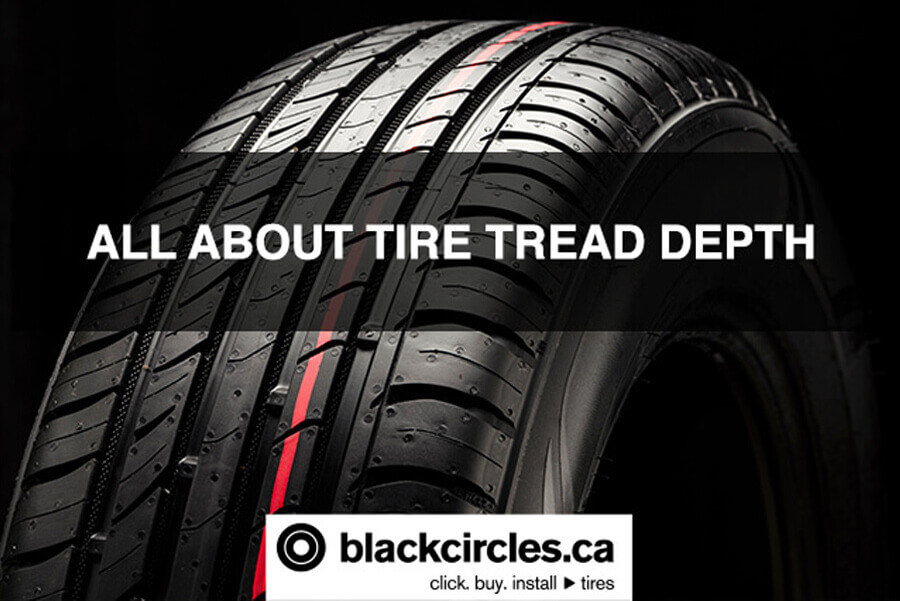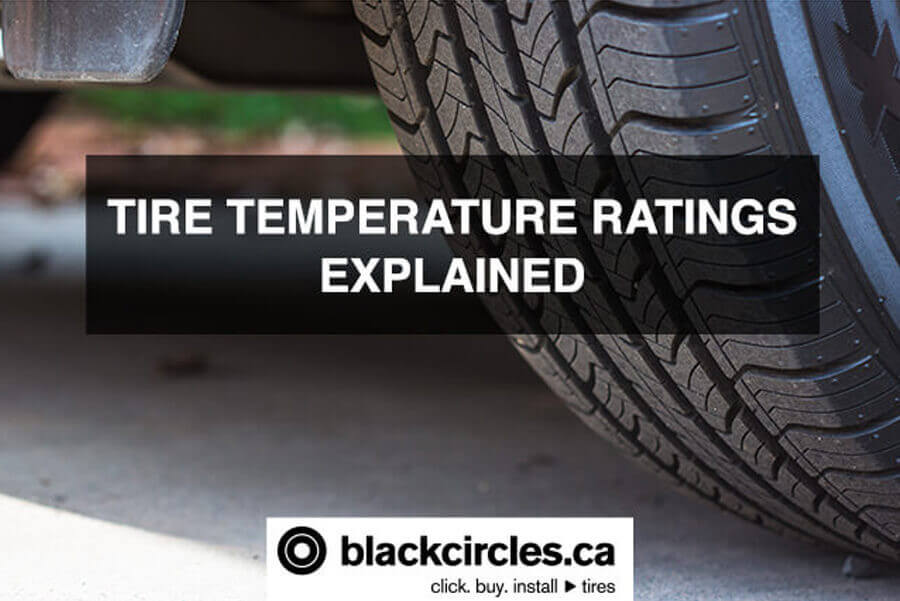If you are like most people, you only get concerned about tire tread depth when you notice that your tires are not gripping the road like they used to, or when you take your vehicle in for service and are told your tires need replacing.
However, the reality is that knowing what your tire tread depth in millimetres (mm) is – and knowing how to measure tire tread depth – is important information to know as a driver. Tire tread depth can affect your driving and your safety on the road very quickly, as a tire with worn out tread won’t give you the traction you might need in certain driving conditions, such as wet or snowy roads.
How to check tire tread?
You may be wondering how to check the tire tread on your vehicle. Luckily, measuring tire tread depth is relatively easy and there are a couple of ways to do so. One easy way involves using a coin, such as a Canadian dime or quarter. Another is with a tire tread depth gauge. Below, we explain these two methods in better detail.

How to check tire tread depth with a tire tread gauge
For real accuracy in checking tread wear, you may want to check the depth with a tire tread gauge. The latter are easily found at all your local hardware stores and online, and the ones that are sold for home use are relatively inexpensive.
When checking with a tread depth gauge, simply ensure your vehicle is parked securely, and then take the gauge and insert it into the grooves (cutouts) on the tread of your tire. When the head of the gauge touches the inside of the tread, you can then read the tire gauge (just like a tire pressure gauge) and see what your tread depth is in mm (millimetres). Any tread depth over 6 mm means your tires are safe and you can continue using them.
If you tire tread depth is 4/32”, then it is time to start looking for a new set of tires. And, if your tire tread depth is 2/32” or less, then you are actually driving in a highly dangerous condition and should seek to purchase a new set of tires immediately. A tread depth of 2/32” or lower can significantly impact your ability to stop safely in wet or snowy conditions, and is considered to be very unsafe.

How to check tire tread depth with a dime
One of the simplest ways to quickly check tire tread in Canada is by using a coin, such as a dime (10 cent coin). So, go head and dig into that coin jar, or under the couch cushions and look for a dime or a quarter.
Again, ensure that your vehicle is parked safely and securely first. Then, take a dime and turn it so that the Queen’s head is facing towards the ground – no disrespect to the Queen – and insert the coin into your tire tread groove. If the Queen’s head – including her crown – are fully visible to your eye, then it is time to replace your tires – ASAP.

If you see less of the Queen, then it is likely your tread depth is 4/32” or higher, meaning you should keep your eyes on your tires, but that you are likely safe enough to continue driving.
If you don’t have a dime handy, you can also use a Canadian quarter to check tire tread depth in Canada. Following the same rules as checking with a dime, when you insert your quarter into the tread with the Caribou’s head facing down. If you can still see the Caribou’s nose, you are starting to experience a lower tread depth and should start looking for a new set of tires.
Check the tread depth of each tire individually
It is best to check each of your four tires, just to be completely safe, especially if you have replaced single tires over the years and are driving with a mismatched set, or tires from different brands. Tires all wear quite differently, and the average tire tread life can vary between different brands and types, so it is possible that one or two tires have less tread depth than others. Or, you may have purchased a used car that has different tire brands installed on it, and so it’s good to develop a baseline for each tire in terms of tread depth.

How often should I check tire tread depth?
Based on recommendations you should measure your tire tread every month. Of course, once you have determined that you have 4/32” or less tread depth on your tire, then you should check more frequently, but based on ensuring the safety of yourself, your family and of course other drivers on the road, you should be looking to replace your tires.
It is also a good practice to check tire tread depth before the winter season, because you want to make sure that you have at least 6/32” of tread depth to tackle winter road conditions. If your tires don’t meet this minimum requirement, then you may want to think about purchasing a set of winter tires for your vehicle.

Tire tread depth is all about safety
At the end of the day, the main reason to be concerned about the available tread depth on your tires is safety. Tires with low tread do not grip the road as well as newer tires, and with a low tire tread you could experience:
- Difficulty in stopping or braking quickly,
- Lack of traction in snow, leading to getting stuck or disabled,
- Increase in incidents of aquaplaning – a scary driving situation where your vehicle loses grip on wet pavement (common during thunderstorms with downpours).
For the sake of safety for both yourself and your family, it is important to regularly check your tire tread depth. Then, if you have determined that you need to replace your tires, you can start shopping.

One of the best ways to shop for a new set of tires to replace those with low tread depth is by looking online at a tire seller such as blackcircles.ca. Of course, if you have questions regarding tire tread depth and whether it’s a good time to replace the current tires on your vehicle, then you can reach out to the team at blackcircles Canada, and we will be happy to help you.







